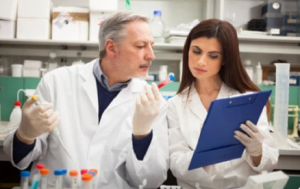INTRODUCTION: The Indian pharmaceutical companies are in a unique position where they are balancing the…
Biotechnological Patenting And Traditional Knowledge
Any biotechnological innovation is the creation of a person’s intellect. A patent is an exclusive right to abstain a third party from creating or taking benefits of one’s invention and includes the right to license others to make, use, or sell it. The paramount objective according to labour theory as propounded by John Locke is for one to reap the fruits of their efforts. Protection for any invention shall be available, provided that they fulfill the basic requirements of novelty, inventive step and industrial application. But, not every biotechnological invention can be patented.
Till the year 2002, biotech inventions were not patentable in India. One of the first cases in India to deal with the patentability of processes or products containing living organisms was Dimminaco AG v. Controller of Patents and Designs. Every progress in the field begins with a factor existing in nature. The question is whether these products of nature have the element of novelty. Novelty in biotechnology patents goes hand in hand with the question of the subject matter of the invention. This is because most claims of biotechnology-related inventions stem from pre-existing biological matter. Therefore, it becomes necessary to show the examiner that there was a considerable human intervention that merits some improvement over the product of nature.
[Image Sources : Shutterstock]
Industrial application of an invention is usually determined in a case to case basis. However, it is safe to say that there has not been substantial case law development concerning biotech patent. Going back to the Dimminaco case, where, the Court, at no stage questioned the utility of the invention. Utility and industrial applications are intrinsic to a biotechnological invention. The 2002 amendment brought about monumental change in the IP regime as it broadened the scope of the subject matter of patentability and accommodated the TRIPS regulations under Article 27. However, there is a wider scope of what is not patentable. The Patents Act provides a long list of inventions not patentable, which is unique to the Indian scenario.
The subject matter of an invention in the field of biotechnology is a biological material that largely includes genetic or non-genetic material from plants, animals, and microorganisms. In India, there are numerous species of flora, fauna and microorganisms and a plethora of indigenous knowledge and resources. In 1994, India signed the Convention on Biological Diversity and eventually enacted the Biological Diversity Act in 2002 with the following three main objectives:
- Conservation of biological diversity
- Sustainable use of its components
- Equitable sharing of the benefits arising out of the use of biological resources and knowledge.
Traditional Knowledge
Traditional Knowledge is an exclusive intrinsic knowledge of a community which has been passed on from ages, in particular it is the knowledge resulting from intellectual activity in a traditional context, and includes practices, know-how, skills, and techniques that are developed, sustained and passed on from generation to generation. It can be found widely in the medicinal, scientific, agricultural knowledge as well as biodiversity-related knowledge. The comprehensive database of India’s Traditional Knowledge is contained in the Traditional Knowledge Digital Library. The Indian Patent regime has made necessary arrangements for their protection from exploitation. But these measures may be proven to be inadequate. Traditional knowledge and resources have been shaped for thousands of years of evolution and human cultivation. Genetic resources, environment and organisms act as a crucial resource for the indigenous communities. This knowledge ought to be protected. Several issues such as biopiracy and adverse effects on our ecosystem arise which ought to be addressed through a comprehensive legal framework. Preserving our biodiversity, incentivizing our inventors whilst developing our legal regime should be the goal of law makers. Several issues such as biopiracy and adverse effects on our ecosystem arise which ought to be addressed through a comprehensive legal framework. Thus Sustainable development should be the key to drafting laws pertaining to our natural eco system.
Author: Vaishnavi Naik – a student of Ramaiah College of Law, currently doing internship at IIPRD, in case of any queries please contact/write back to us via email [email protected].



